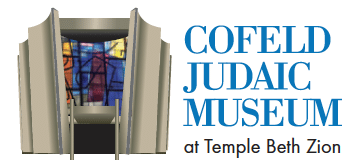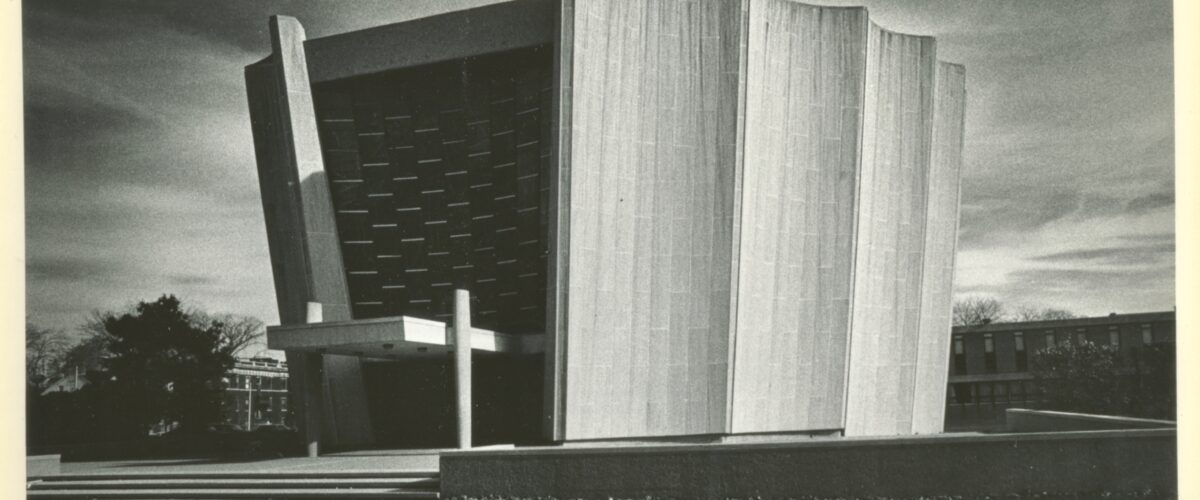Art defines the synagogue spaces. Temple Beth Zion is both an historical architectural site, and a living community filled with art and Judaica. Its design and art collection has enthralled members and visitors.
Max Abramovitz designed our current Sanctuary at Temple Beth Zion as an outward leaning structure representing arms raised in prayer. He completed the building in 1967. At each end of the sanctuary, two stained glass windows anchor the building and provide focal points. The walls rise 45 feet from the Delaware entrance to 60 feet at the ark and platform. Special forms were created for the concrete walls that were bush-hammered to give an aged effect. To read the National Register of Historic Places by Professor Frank Kowsky, click here.
The architect’s design was complemented by windows and structures created by artist, Ben Shahn. He designed the two windows, a free-standing menorah and the tablets with the Ten Commandments. Each tablet is thirty feet high with mosaic letters representing the first Hebrew letter of each commandment, accompanied by the text of each commandment in gold leaf. The windows glow with light and one is inlaid with Hebrew calligraphy. The beautiful rose pink menorah stands on the bimah or prayer platform near the ark, and the Ten Commandment tablets.
An earlier Sanctuary at 599 Delaware Avenue was designed by Edward A. Kent in a Byzantine inspired style, that became a landmark on the main city thoroughfare. Clad in a striking red sandstone sourced locally from Medina, the synagogue sanctuary was topped with a massive copper dome. Tiffany windows were inset into the exterior, while the internal decorative features included a richly painted domed ceiling and a heavily decorated bimah (prayer platform). At the dedication ceremonies, in 1890, Christian religious leaders and city dignitaries from across the Buffalo civic community attended. The loss of this building in 1961 through fire was a loss not just to members, but to the broader civic community.
Both buildings decked their walls and spaces with art in the tradition of hiddur mitzvah, the beautifying a mitzvah or observance within the Jewish tradition.


